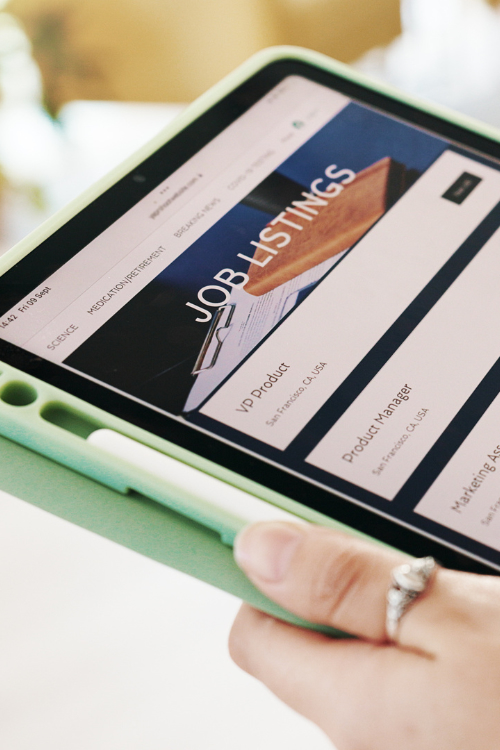What is people analytics?
The short answer is: Using people’s data to make better decisions. People analytics is the application of data mining and quantitative analysis techniques to employees’ data in order to develop actionable insights for HR and business leaders. It can help organisations identify patterns in employee behaviour, assess the effectiveness of their people programs, and improve decision-making around talent management.
When used effectively, people analytics also can help companies improve their recruiting and selection processes, better engage and retain employees, and create a more positive work environment. People analytics also sometimes goes under the name of HR analytics, talent analytics or workforce analytics.
Let’s have a look, what is possible with people analytics.
What are the benefits of people analytics?
People analytics has a huge potential, and there are many possible benefits and use cases of utilising people analytics in your organisation:
Improving recruiting and selection processes: People analytics can help organisations identify the most important predictors of success for a given role, and use this information to improve their recruiting and selection processes. It helps in order to develop actionable insights for HR and business leaders. This is done by extracting useful insights from employee data, such as performance reviews, HR data, recruiting data, surveys, and social media data. This information can then be used to improve decision-making around talent management.
Better engaging and retaining employees: People analytics can help organisations identify the factors that contribute to employee engagement and motivation. This information can be used to develop strategies for better engagement and retention. For example, if an organisation knows that a certain type of incentive is more likely to motivate a certain group of employees, it can create a program or policy that rewards employees based on their individual needs. Additionally, people analytics can help organisations track employee turnover rates and identify why employees are leaving the company. This information can help organisations develop policies and programs aimed at reducing employee turnover.
Creating a more positive work environment: By identifying patterns of behaviour that lead to negative outcomes, people analytics can help organisations create a more positive work environment. By understanding these patterns, organisations can take steps to address them and create a more positive work environment. Furthermore, people analytics can be used to identify and reward employees who exhibit positive behaviour. This can help to further improve the work environment by making it more motivating and rewarding for employees.
Improving decision-making around talent management: People analytics can help organisations make better decisions around issues like succession planning, training and development, and performance management by analysing data related to employee demographics, job roles, and organisational structures. This information can help paint a more comprehensive picture of how an organisation's workforce functions as a whole and where improvements can be made. Additionally, people analytics can identify patterns and trends in employee behaviour that may be indicative of potential problems or areas of opportunity. By understanding these issues, organisations can take steps to address them before they become bigger problems.
Making skills more transparent: Organisations can use people analytics to create a more transparent hiring process by identifying which skills and abilities are most important for success in specific roles. And also which skills are present in the company. This information can then be used to develop job descriptions and personas that accurately reflect the desired skill set. Additionally, this data can help organisations better understand the training and development needs of their employees so that they can provide more targeted and effective programs.
What are the challenges of people analytics?
While there are many potential benefits to using people analytics, there are also some challenges that organisations need to be aware of. These challenges include:
Data quality: In order for people analytics to be effective, organisations need to have high-quality data about their employees. This can be a challenge for organisations that don’t have strong data management practices in place.
Data interpretation: Another challenge of people analytics is data interpretation. Data analytics is only as effective as the interpretation of the data. This can be a challenge for organisations that do not have experience with data analytics.
Ethical concerns: There are ethical concerns around the use of people analytics, particularly when it comes to issues like privacy and discrimination. Organisations must be aware of these concerns and take steps to mitigate them.
Implementation: Implementing people analytics can be a challenge for organisations, particularly if they don’t have the right tools and resources in place.
Change management: Using people analytics can require organisational changes, which can be challenging to manage.
The challenges of people analytics lie in the complexity of human behaviour, which makes it difficult to gather and analyse data in a way that provides accurate insights. Additionally, many organisations lack the infrastructure and resources needed to properly collect and interpret people data. As a result, people analytics remains a relatively new and unexplored field, which can make it difficult to find experienced practitioners. Finally, the ethical implications of people analytics must be carefully considered, as the misuse of data could lead to negative consequences for individuals and groups.

How can organisations use people analytics effectively?
Many organisations jump into people analytics without asking the right questions and developing an appropriate environment where the data is collected and processed.
Rob Etheridge, MD and global head of workforce management & analytics at Deutsche Bank points it down to three fundamental questions:
- What decisions are we enabling?
- What strategies are we helping to form?
- What interventions are we bringing about that are beneficial to the business and bring value with it?
In essence, understand what value people analytics provides. That starts in defining the business case or problem.
Define the business problem: The first step is to define the business problem that you want to solve with people analytics. Without a clear problem statement, it will be difficult to know what data to collect and how to analyse it.
Collect the right data: Once you’ve defined the business problem, you need to collect the data that will help you solve it. This data can come from a variety of sources, including surveys, performance reviews, and social media.
Analyse the data: Once you’ve collected the data, you need to analyse it to identify patterns and trends. There are a variety of statistical methods that can be used for this purpose.
Develop actionable insights: The final step is to develop actionable insights that can be used to improve decision-making. This step requires you to translate your data and analysis into recommendations that can be implemented by the organisation.
Improve data quality: One way to overcome the challenge of data quality is to improve data collection and management processes. This can be done by implementing better data governance practices and investing in data quality tools.
How to introduce People Analytics successfully
There are a few levers that can be pulled in order to successfully introduce people analytics within an organisation. First, it is important to have executive sponsorship and buy-in for the initiative. Without senior-level support, it can be difficult to get other areas of the organisation on board with the new program. A clear business case for people analytics helps tremendously with that. This means being able to articulate how the data gathered will help improve key business outcomes such as employee engagement, retention, or performance. Next, it is important to have a strong team in place to manage and execute the people analytics initiative. This team should be comprised of individuals with both data and HR expertise, so they can effectively analyse and act on the data collected. Finally, it is important to foster a data-driven culture within the organisation. This means encouraging employees at all levels to use data to make decisions and drive results. By implementing these levers, organisations can successfully introduce people analytics and reap the benefits that come with it.
Why do we need people analytics to tackle the future?
People analytics is becoming an increasingly important tool for organisations looking to tackle the future. By understanding employee engagement, motivation, and performance, organisations can better anticipate and plan for the needs of their workforce. This, in turn, can help lead to a more successful organisation overall.
And there are a number of more reasons why people analytics is so important. For one, the world of work is changing rapidly. With the rise of automation and artificial intelligence, many jobs that have existed for years are disappearing. To maintain a competitive edge, organisations need to be able to identify which roles will be most impacted by these changes and plan accordingly. In particular, this means training the people concerned with new skills.
Another reason why people analytics is so important is that the workforce is becoming increasingly diverse. With baby boomers retiring and millennials entering the workforce, organisations need to be able to cater to the needs of these different generations. By understanding the preferences and expectations of each group, organisations can better develop policies and procedures that will work for everyone.
How does Bayer use people analytics?
Bayer is a German company that is using people analytics successfully. The pharmaceutical giant began using data to improve its HR functions in 2009. Bayer has used people analytics to help it make decisions about everything from employee retention to talent management.
Recently, Bayer is using AI to evolve and transform learning. They use data and insights to identify the skills they need to re-skill or continuously skill their employees. Furthermore, they use AI to design a program that lets them see what their employees are trying to learn, so they can better cater to their needs. They try to make sure that they are fostering a culture of growth which is accessible to everyone. Not the traditional, few people nominated for attendance learning programs with a duration of six or twelve months. So, they utilise the AI insights to guide their new learning direction, creating a culture of learning that is fluid, flexible, and able to adapt swiftly.
Learning is the ultimate people-skill to stay ahead of the competition and avoiding a skill gap. Also, your people will be grateful to stay relevant with their enhanced skills not being replaced by AI in the near future.
Conclusion
People analytics is becoming an increasingly important tool for organisations looking to tackle the future. By understanding employee engagement, motivation, and performance, organisations can better anticipate and plan for the needs of their workforce. This, in turn, can help lead to a more successful organisation overall. And there are a number of more reasons why people analytics is so important. For one, the world of work is changing rapidly. With the rise of automation and artificial intelligence, many jobs that have existed for years are disappearing. To maintain a competitive edge, organisations need to be able to identify which roles will be most impacted by these changes and plan accordingly. In particular, this means training the people concerned with new skills.
Also, people analytics can help organisations improve their bottom line. By understanding which employees are most engaged and motivated, organisations can make better use of their resources. This, in turn, can lead to increased productivity and profitability. So, why do we need people analytics to tackle the future? Because it provides organisations with the insights they need to succeed in an ever-changing world.










.png)




